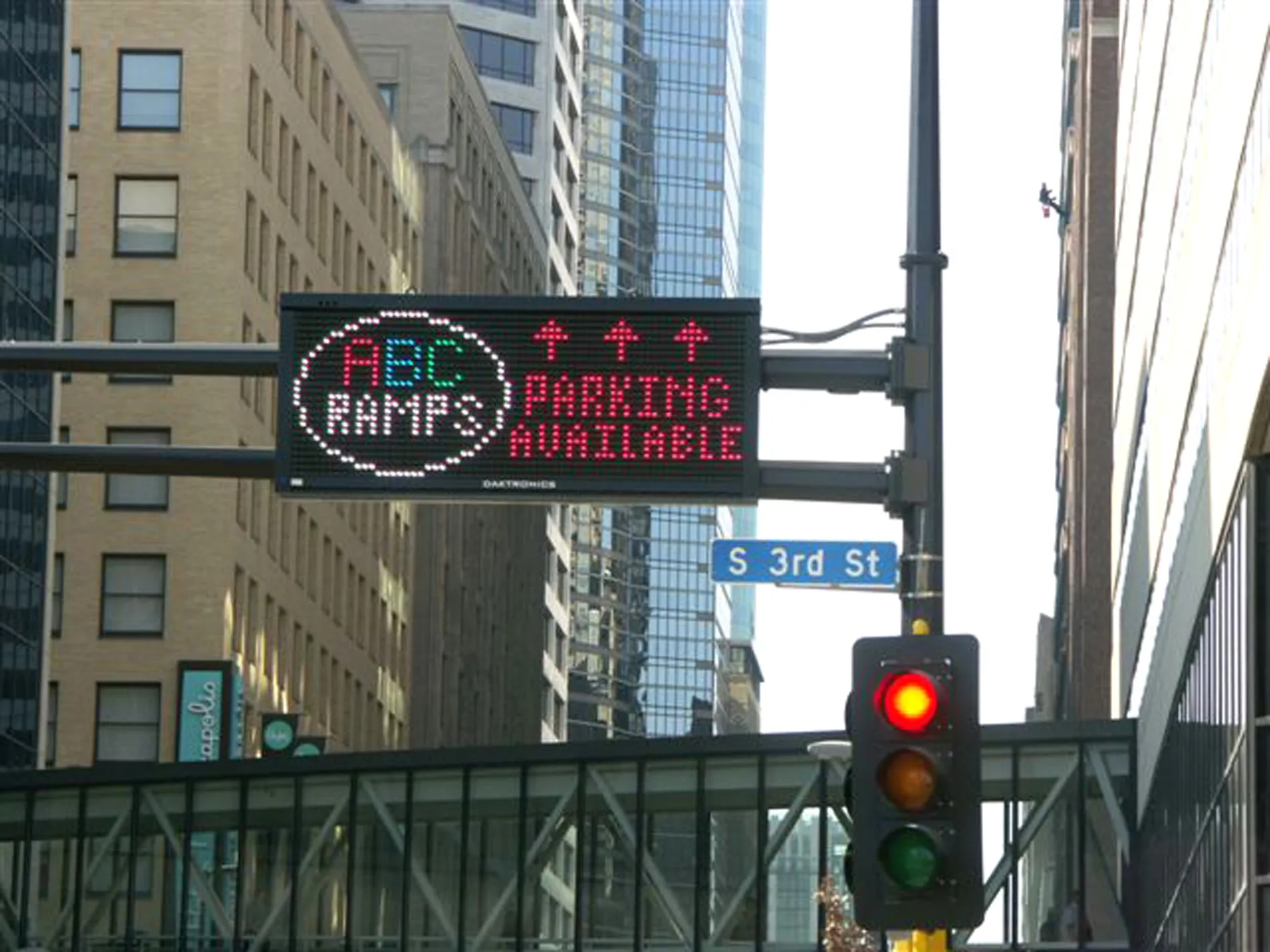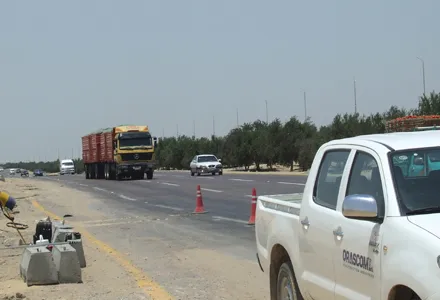From the highway to the parking space: message sign technology has proved that it simplifies wayfinding
Variable message signs (VMS) are often located at key decision points on busy highways to help manage the network by providing advanced warning to drivers of emergencies and incidents. They are also used to warn drivers of events that may cause delays in the future such as road works and major events. An example comes from the USA where, to stimulate economies and refresh downtown areas, cities are build
February 14, 2012
Read time: 4 mins

From the highway to the parking space: message sign technology has proved that it simplifies wayfinding
Variable message signs (VMS) are often located at key decision points on busy highways to help manage the network by providing advanced warning to drivers of emergencies and incidents.They are also used to warn drivers of events that may cause delays in the future such as road works and major events.
An example comes from the USA where, to stimulate economies and refresh downtown areas, cities are building and renovating venues to attract people and money from surrounding areas.
After overcoming the daunting challenges of funding, planning and constructing new venues, many of these cities are faced with new challenges regarding the increased crowds.
And recently, many have implemented dynamic message signs (DMS) to guide visiting motorists throughout the downtown areas, using display systems that are meant to ease a motorist's transition from the roadway to the parking facility and vice-versa.
For example, the addition of Target Field in 2010 created a new challenge for the City of Minneapolis [Target Field is home ballpark of the Minnesota Twins, the city's Major League Baseball/MLB franchise, who moved to Target Field for the 2010 MLB season after 28 seasons at the Hubert H. Humphrey Metrodome]. Along with this, two other major league venues, art galleries, theatres, a convention centre, and six Fortune 500 company headquarters [a ranking of the top 500 corporations worldwide measured by revenue] all within two square miles (5km²), congestion and parking become major issues when concurrent events are held.
To keep traffic moving smoothly throughout the downtown area, the city implemented a detailed strategy involving
"The City of Orlando in Florida is also using this technology to manage traffic around the cutting-edge Amway Center, the new home of the Orlando Magic basketball team. By placing these displays on the arterial routes surrounding the Amway Center, the city provides useful way-finding information and an exceptionally easy drive to and from the facility," says Daktronics.
"Even without the introduction of new major venues, cities are taking advantage of the technology to improve their existing offerings for visitors and businesspeople."
Another example comes from Washington state, north-west USA, where the city of Seattle teamed up with several parking facilities in its downtown area to install dynamic message centres, which provide directions in addition to space counts and rates.
The displays reduce circulation congestion on the streets by communicating the most direct route to open parking spaces. Bringing people to the garages also frees up a few of those notoriously-rare on- street parking spaces.
"In addition, providing options helps motorists feel more comfortable and reduce frustration during their visit," says Daktronics.
"Not to be outdone technologically, San Francisco [state of California] followed suit in July, 2010, by announcing a $25 million project involving an integrated website and variable parking rates based on demand. This project is integrated with new and existing displays which will also use the real-time data to direct motorists to open spaces in city-owned garages.
"Collaborating with these cities has given Daktronics a clearer understanding of what does and doesn't work for the system manager and the downtown visitor. Although funding and implementing a new DMS network isn't exactly a piece of cake, we work hard to simplify the management and maintenance of these systems by enhancing our product designs and introducing new features.
"After all, if cities are capable of investing in and building world-class venues traffic should be the last thing on visitors' minds. These projects have shown that, by using today's DMS technology, cities can keep visitors, and their wallets, rolling into town."
Elektra's city debut
A new VMS family, developed in the UK, is said to offer a highly configurable, adaptable and flexible solution to meet the requirements of VMS in a wide variety of different situations.
Elektra, which is in use in the city of Portsmouth, southern England, also provides highly visible and concise information to drivers, enabling them to be better informed, reducing traffic congestion and journey times while lowering pollution levels from queuing traffic.
According to the company's systems marketing manager, Mark Bodger: "Elektra signs bring a number of key benefits to all styles of installation, whether car park, driver information or for other applications." Its is available in a range of different enclosure sizes, with display characters from 100-320mm, and offers easy integration to new and existing UTMC management systems.








